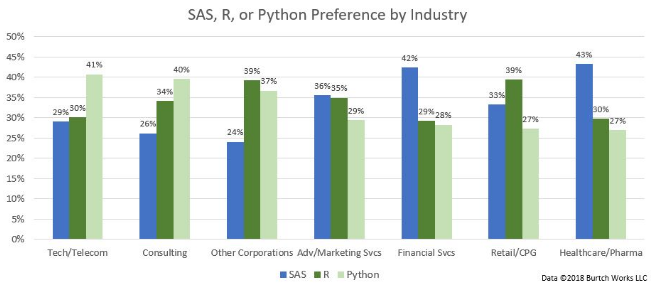This article was written by Tanmoy Ray
If you are a senior data scientist or pro in predictive analytics, you would probably be using both R & Python, and maybe other tools like SAS, SQL etc. But, what if you are a beginner or just thinking about to start a career in data science, machine learning, and business analytics ? Which one should you learn – R or Python? It has always been a topic of great debate among data scientists, researchers and analytics professionals. In this article, we will discuss R vs Python – usability, popularity index, advantages & limitations, job opportunities, and salaries.
Introduction to R
R is a statistical and visualization language which is deep and huge and mathematical. R was developed in 1992 and was the preferred programming language of most data scientists for years. R makes it possible to find a library for whatever the analysis you want to perform. The rich variety of library makes R the first choice for statistical analysis, especially for specialized analytical work. Additionally, one of the standout features of using R is you can create beautiful data visualization reports and communicate the findings.
R: Popular Packages for Coders
- dplyr, plyr, and data table for data manipulation
- stringr to manipulate strings
- zoo to work with regular and irregular time series
- ggvis, lattice, and ggplot2 data visualization
- caret for machine learning
Introduction to Python
Python is based on C, it is a software development language which is deep and huge and intuitive. It is easier to learn than many other languages, and you don’t need to be totally fluent in order to make use of it for genomics or other biological data analysis. It can do some statistics and is a great scripting language to help you link your workflow or pipeline components together.
Python was released in 1989 with a philosophy that emphasizes code readability and efficiency. It is an object-oriented programming language, which means it groups data and code into objects that can interact with and modify one another. Java, C++, and Scala are other examples.
Python is a tool to deploy and implement machine learning at a large-scale. It can pretty much do the same tasks as R: data wrangling, engineering, feature selection web scrapping, app and so on. But, Python codes are easier to maintain and more robust than R. It provides cutting-edge API for machine learning or Artificial Intelligence.
Most of the data science jobs can be done with five Python libraries: Numpy, Pandas, Scipy, Scikit-learn, and Seaborn. Additionally, Python makes reproducibility and accessibility easier than R. If you need to use the results of your analysis in an application or website, Python is the best choice.
Python: Popular Libraries for Coders
- pandas for data manipulation
- SciPy/NumPy for scientific computing
- scikit-learn for machine learning
- matplotlib for graphics
- statsmodels to explore data, estimate statistical models, and perform statistical tests and unit tests
To read the rest of the article, with numerous resources, illustrations and tables, click here.
DSC Resources
- Invitation to Join Data Science Central
- Free Book: Applied Stochastic Processes
- Comprehensive Repository of Data Science and ML Resources
- Advanced Machine Learning with Basic Excel
- Difference between ML, Data Science, AI, Deep Learning, and Statistics
- Selected Business Analytics, Data Science and ML articles
- Hire a Data Scientist | Search DSC | Classifieds | Find a Job
- Post a Blog | Forum Questions

